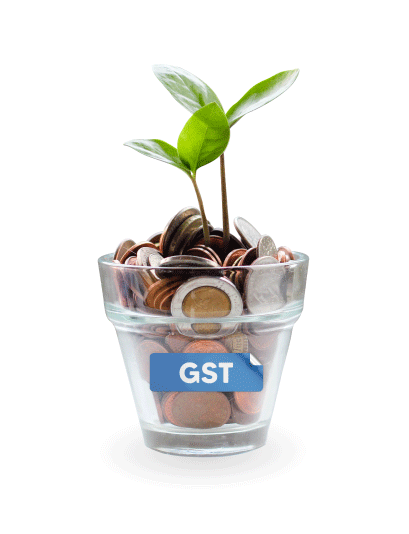GST Registration Form
GST Registration
4.8 4355 customers
GSTIN IS A PAN-BASED 15-DIGIT NUMBER
WHICH IS CREATED AS BELOW:
Under the Goods & Service Tax (GST), all the taxpayers are registered on a centralized portal for compliance and administration purposes. They are assigned registration under a single administration. On registration, all the taxpayers are allocated a unique Goods and Services Tax ID Number (GSTIN).

1. The first two digits denote the state code as per the Indian Census 2011. Every state has a different code. For instance, the State code of Maharashtra is 27, State code of Delhi is 07.
2. The next ten digits will be the PAN number of the taxpayer.
3. The thirteenth digit will be assigned based on the number of registration within a state.
4. The fourteenth digit will be Z by default.
5. The last digit will be for the check code. It may be an alphabet or a number.
6. Any taxpayer looking to get registered under GST requires to apply on the portal with the essential details like name, nature of business, service/ product category, details of promoters/ directors among others. On application, the details are assigned to the local GST administration department for approval and allotment of GSTIN.
GST IS MANDATORY FOR
Turnover Criteria
Any businesses that have a turnover of on top of forty lakhs (Rs ten Lakhs for North-Eastern states, J & K, Himachal Pradesh and Uttarakhand), Rs twenty lakhs just in case of services.
E-commerce operator
Person who connects through e-commerce business (such as Amazon or Flipkart), should register for GST from the beginning only.
Casual Taxpayer
If you supply goods or services in events/exhibition & you don’t have a permanent place of business, you need to get online GST Registration. The validity of causal GST Registration is 90 days
Sales/Service provide to other state (Inter State)
One should register under GST if any supplier of goods or service provider involved in any other state.
Involved In Online Information
Person supplying online information and database access other than a registered taxable person
NRI Exporters & Importers
Any NRI person or company supplying goods or services in India need to register GST regardless of turnover.
